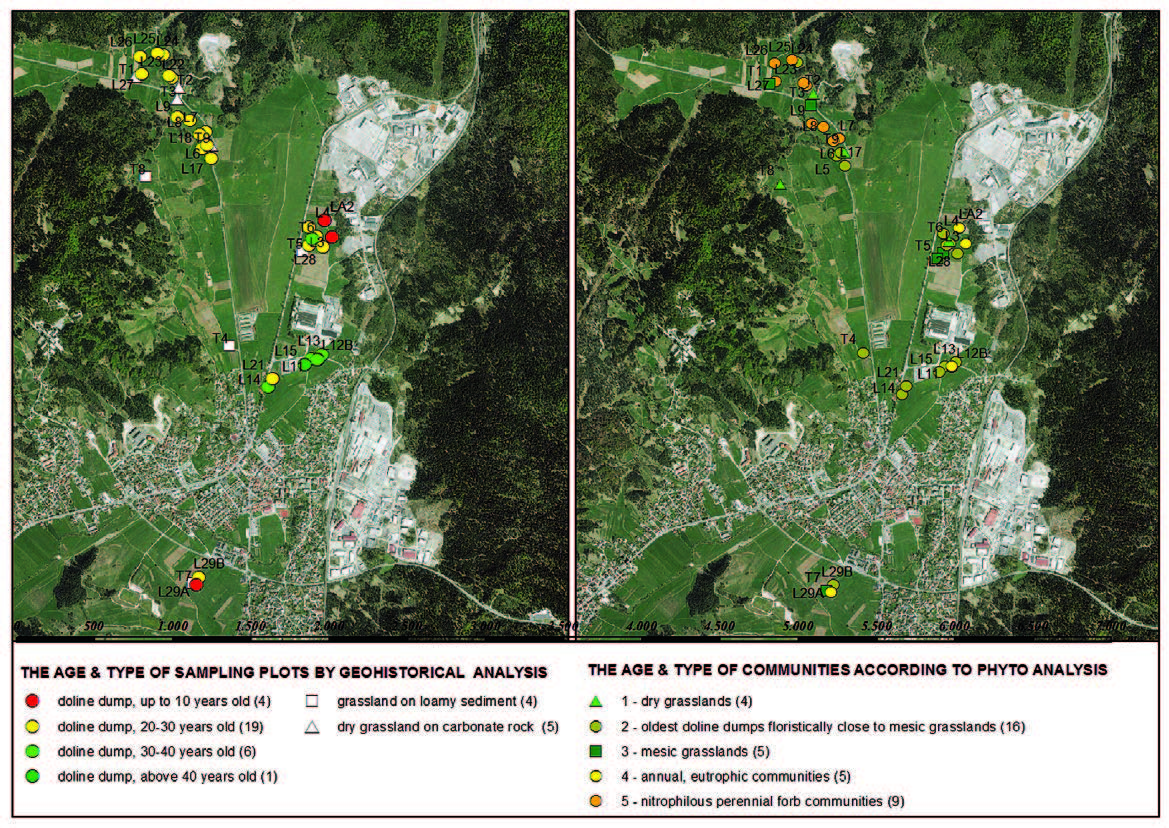Vegetation as the Bioindicator of Human-induced Degradation in Karst Landscape: Case Study of Waste-filled Dolines
DOI:
https://doi.org/10.3986/ac.v46i1.4712Keywords:
suffusion dolines, plant communities, waste dumping, Ellenberg indicator values, poljeAbstract
Mismanagement practices, such as unsustainable waste disposal, created many degraded sites. In karst landscapes, old uncontrolled landfills are often located in dolines (sinkholes). Buried waste material in dolines represents degradation of landform, habitats and a potential danger of groundwater pollution. Buried waste provides heterogeneous ecological conditions on the surface, thus plant communities or individual plant species that developed on the surface of landfills can be used as a bioindicators of waste-filled doline sites and therefore indicators of land degradation. We aimed to discover the potential of vegetation to detect unknown locations of old dump-sites in suffusion dolines in Logaško polje (Dinaric Karst, Slovenia), either by plant communities or by plant species. We aimed to ascertain whether vegetation can indicate the dumping period by estimation of community succession stage. Locations and the age of waste-filled dolines (doline-dumps) were preliminary identified by a historical landscape study. Thus, we used time series of aerial photographs and digital photogrammetry tools for 3D modelling of historical terrain. Ecological evaluation was based on sampling the floristic composition of plots (5x5 m). We analysed ecological conditions by Ellenberg bioindicator values, structure by life history traits and naturalness by hemerobic levels of plants. We studied in detail 30 up to 50-years-old waste-filled dolines that are interspersed by dry and mesic grasslands. Ecological evaluation demonstrated that the main driver of ecological diversity at doline-dumps is the time at which the doline was backfilled and succession started. Annual and eutrophic communities dominate the youngest doline-dumps, middle aged doline-dumps are covered by nitrophilous perennial forbs and, finally, communities developed towards mesic grassland. We conclude that plant communities in combination with diagnostic plant species can be used as a bioindicators of doline-dumps in agricultural landscape of Logaško polje and can therefore indicate the sites of potential groundwater pollution sources but not the type of long-time buried waste.
Key words: suffusion dolines, plant communities, waste dumping, Ellenberg indicator values, polje.
Downloads

Downloads
Published
How to Cite
Issue
Section
License
Authors guarantee that the work is their own original creation and does not infringe any statutory or common-law copyright or any proprietary right of any third party. In case of claims by third parties, authors commit their self to defend the interests of the publisher, and shall cover any potential costs.
More in: Submission chapter




